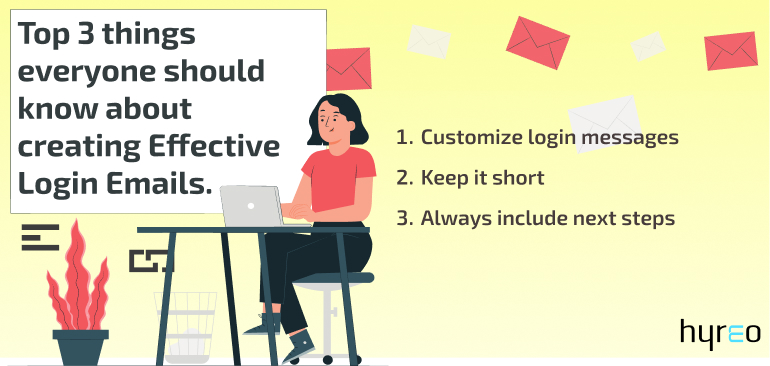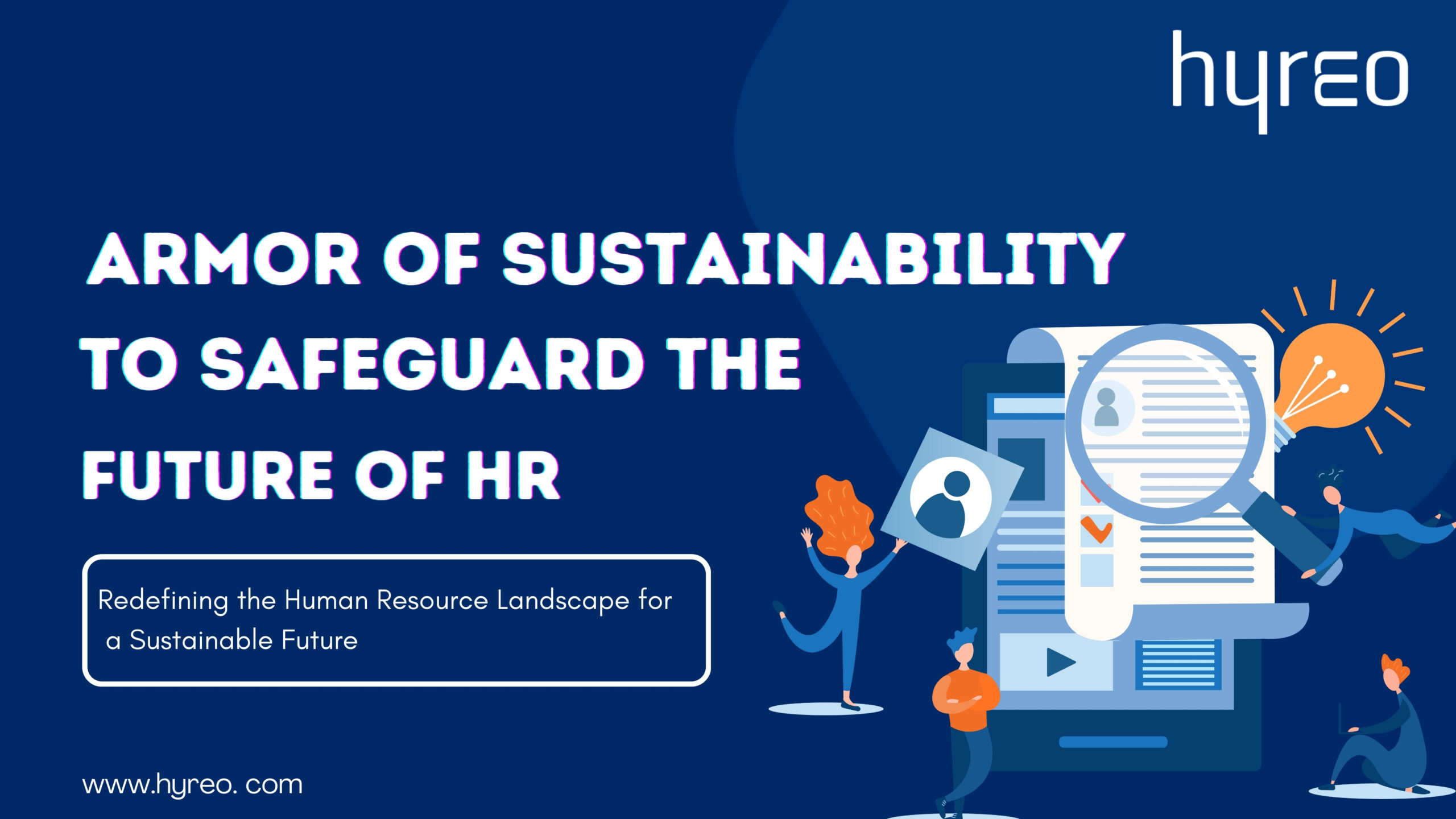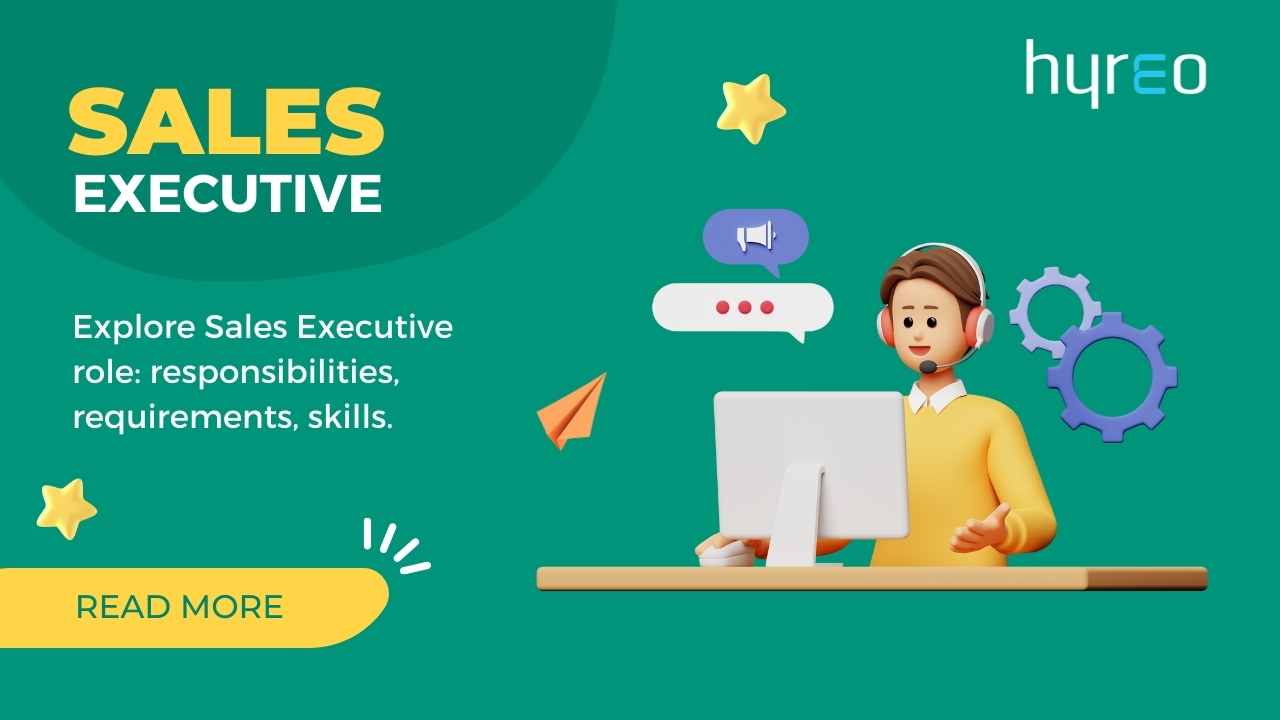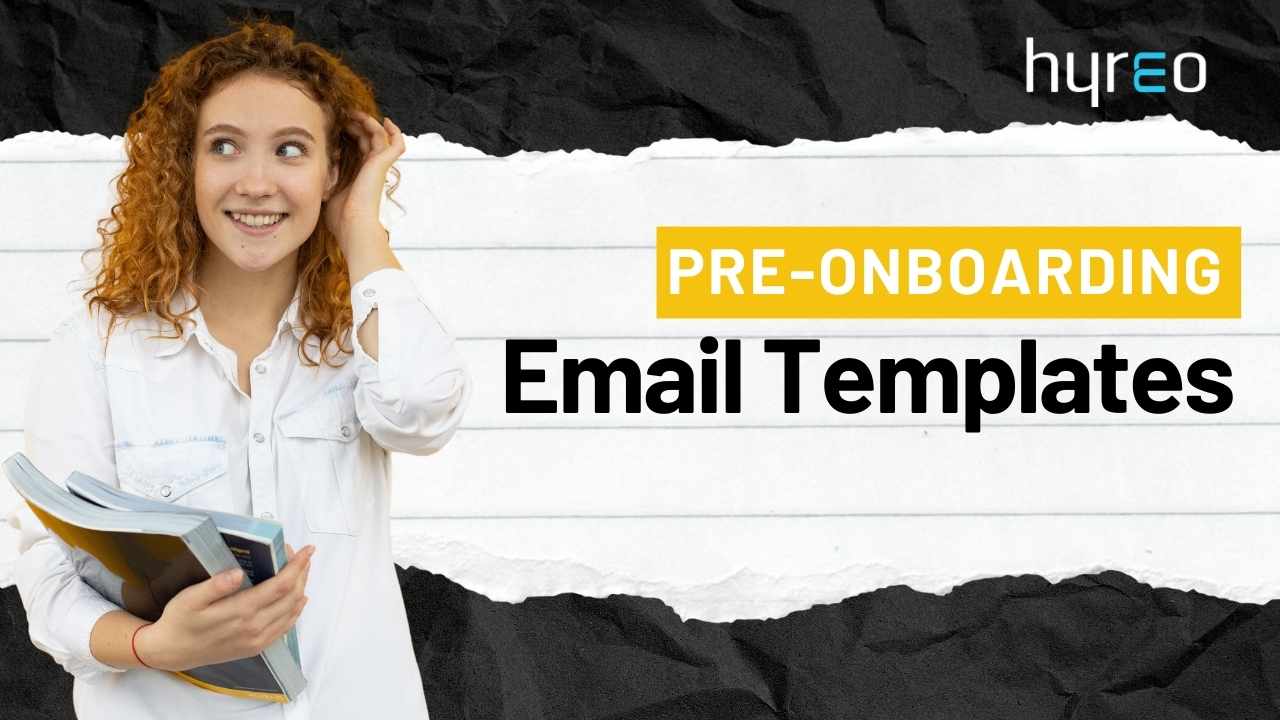Key Takeaways:
- Pre-onboarding email templates play a crucial role in creating a positive first impression and setting the tone for a successful employee onboarding process.
- These templates provide important information about the company’s culture, values, expectations, and what the new employee can expect during the onboarding experience.
- A well-crafted welcome email helps the new employee feel like part of the team and understand the company’s work style, schedule, and priorities.
Pre-onboarding email templates are an integral part of the employee orientation process. They set the tone for the employer-employee relationship and can help create a positive first impression. These emails provide important information about what a new employee can expect during their onboarding experience, as well as the company’s culture, values and expectations.
Why create a welcome email to hire a new employee?
A new employee welcome message is designed to make the new employee feel like they are officially part of the team. This is an early opportunity for your new employee to see how your company culture shines. It also gives them a chance to understand your company’s expectations of work style and schedule and determine their own priorities.
But most importantly, your welcome email is an opportunity for your organization to make a great first impression and get things started. A quality onboarding email ensures a great employee experience from the start, making it easy for new hires to access company information and resources.
You must sometimes wonder if using starter email templates can be fruitful?
Employees ignore 65% of emails; 96% of customers unsubscribe from mailing lists.
The above statistics show that email needs to be more effective than ever. That said, email templates can be a gamble. If you google it, you already know this. You’ve probably seen templates with more text than a phone book and terrible grammar.
Why should we write pre-onboarding emails?
The orientation of employees is critical. Why? Because research has shown that employees who feel valued and welcome are more likely to stay and be more productive.
The first impression of the company also counts. You want to present your company’s culture and professionalism to new hires. Retention and productivity are two of the biggest challenges facing companies, so creating an onboarding strategy right from the start should be a top priority for any business leader.
So induction is a critical part of the process. During the employee onboarding process, employers send several emails in a row. Everyone needs to convey the same message of support and be inclusive and enthusiastic.
How can you do this?
Employee onboarding isn’t always easy (and it’s still a work in progress for us too), but in this guide, we’ll show you how any company can start building their own email onboarding process.
Email opt-in best practices for employee onboarding

Let’s start with some basic email conventions. Here are 10 things everyone should know about creating effective login emails.
#1 Start before the first day
Commence sending mails prior to employees joining and monitor how your emails move.
#2 Customize login messages
Use personalization whenever possible, but use templates as your business grows.
#3 Keep it short
Don’t overwhelm people with information; keep things short and to the point and save difficult and important information for meetings.
#4 Get help from HR
Have HR professionals involved in creating your emails to ensure appropriate language and information.
#5 Use inclusive language
Ensure inclusive language that respects the diverse backgrounds and identities of your employees.
#6 Keep the tone light
Give your emails some personality (no one wants to think they have a boring boss!)
#7 Don’t miss out on email formalities
Ensure to include email formalities that you expect from any email such as subject, salutation, login etc.
#8 Use all formats to get message across
Don’t be afraid to add bullets, bold text, and even emoticons to ensure the right information is conveyed and received.
#9 Always include next steps
Ensure the next steps are clearly detailed for the employees.
#10 Guidance for support
Remember that some people need a little extra help, so always direct them to where they can get extra support and answers to questions in every email.
Employee onboarding email templates
Employee onboarding email templates are critical to onboarding new employees and helping them feel comfortable and supported as they begin their new role. These emails contain important information about the company, the role and the onboarding process that can help ease any anxiety or uncertainty a new employee may have.
Here are a few employee onboarding email templates to help you create a successful onboarding experience.
Model 1: Introduction and instructions for the first day
Subject: Your First Day at [Company Name]: Here’s What to Expect!
Dear [Employee Name],
Welcome to the [Company Name] family!
We are absolutely thrilled to have you on board and are eagerly looking forward to kicking off this exciting journey together. To ensure your first day is both enjoyable and productive, we have arranged a series of welcoming activities just for you.
Here’s what you can anticipate:
Arrival Details
Time: [time]
Location: Our office at [location]
Contact: Upon arrival, you’ll be warmly greeted by [person/department] who will be your go-to guide, offering you a grand tour of our office and introducing you to your new teammates.
Documentation: To facilitate a smooth onboarding process, kindly bring along the following documents: [list of documents required].
Meet Your Manager
Time: [time]
Details: A scheduled sit-down with your manager, [name of manager], awaits you, providing a great opportunity to get acquainted and discuss the exciting road ahead.
Lunch is on Us!
Details: On your first day, lunch is on us! It’s a little gesture from [Company Name] to welcome you home.
We are here to assist you in any way we can, so please don’t hesitate to reach out with any questions you may have. Our goal is to facilitate a seamless transition for you into your new role.
We can’t wait to welcome you in person and to witness all the incredible things we will achieve together!
See you soon!
Warm regards,
[Your Name]
Model 2: Overview of company policies and benefits
Subject: Your [Company Name] Benefits and Policies Guide
Dear [Employee Name],
Welcome to your next chapter at [Company Name]!
As a vital part of your onboarding journey, we are pleased to share with you the comprehensive guide to our company’s policies and the exclusive benefits you are entitled to as a member of the [Company Name] family.
Enclosed, you will find details on the following:
- Our Code of Conduct: Learn about the principles that guide us, fostering a positive and respectful workspace.
- Health and Wellness: Get to know your health, dental, and retirement plan options to secure a bright future.
- Paid Time Off: Familiarize yourself with our generous leave policies, designed to help you balance work and personal time effectively.
- Absence Policies: Understand the protocols in place to manage unforeseen absences, ensuring a smooth workflow for all.
We encourage you to review the attached document carefully and reach out to our HR team for any clarifications. We are here to assist you in understanding every detail and making the most of the benefits available to you.
As we eagerly await the remarkable contributions you will bring to our team, we hope to provide all the support you need in settling in comfortably.
See you soon, and here’s to a fruitful journey ahead!
Best regards,
[Your Name]
Model 3: Warm Welcome and Onboarding Details
Subject: Your New Adventure at [Company Name] Begins Soon!
Dear [Employee Name],
A Warm Welcome to the [Company Name] Family!
We are delighted to welcome you to our vibrant team and are eagerly looking forward to the unique perspective and value you will bring to us. Your adventure begins on [date], and here is what you need to know:
Arrival Details
Time: Please arrive at our office no later than [time].
Dress Code: [casual/business casual].
Preparation: [If necessary, remind your staff to bring identification/paperwork.]
Your Workspace
Setup: Rest assured, we have prepared your workspace with all the necessary equipment. Our dedicated team will assist you in setting up your computer, software, and online account on your very first day.
Welcome Kit: [If possible, add details about any extras you have prepared for the new hire.]
Your Onboarding Journey
Agenda: Your first few days are well-planned to ease your transition into our company. Please refer to the attached agenda for detailed information.
Training: We have organized training sessions to help you get acquainted with our company’s operations.
Connecting with the Team
Event: Be our special guest at the [scheduled event/lunch], where you’ll meet and forge connections with your new colleagues.
Support: HR is at your disposal to assist you in completing the necessary contract documents, and your hiring manager will guide you through your initial steps at [Company Name].
Let’s Forge Ahead!
Feel free to reach out with any queries you may have before your first day. I am here to assist you in any way to ensure a smooth start to your journey at [Company Name].
We are thrilled to collaborate with you and witness the amazing heights we will reach together.
See you soon!
Warm regards,
[Your Name]
[Your Signature]
Ways to reply to an onboarding email
When you receive an email from your employer, it’s important to respond in a timely and professional manner.
Here are three ways to respond to the initial email.
#1 Confirm your consent
After receiving the orientation email, you must first confirm that you agree to the assignment. You can simply reply to the email and express your gratitude for the opportunity and confirm that you are excited to start your new role.
Sample answer:
Dear [Employer Name],
Thank you for the heartwarming welcome and the detailed information provided in the email. I am genuinely excited to come on board and collaborate with the talented individuals at [Company Name].
I am eager to immerse myself in the vibrant culture of the company and look forward to contributing to the team’s success. I happily accept the offer and appreciate the wonderful opportunity presented.
Thank you once again. I am eager to start this new chapter and make a positive impact at [Company Name].
Best regards,
[Your Name]
#2 Ask questions
It’s perfectly normal to have questions about your new role and the onboarding process. Take this opportunity to ask any questions you may have so that you have a clear idea of what is expected of you and how to prepare for your first day.
Sample answer:
Dear [Employer Name],
Thank you so much for the warm welcome and the comprehensive details outlined in the introductory email. It has certainly heightened my excitement to join the [Company Name] team.
As I prepare to start this exciting new journey, I would like to know more about the day-to-day specifics. Could you please provide more insights into the daily schedule for the first week? Also, I would love to understand the preferred dress code so that I can present myself appropriately while aligning with the company’s culture.
Thank you for your time and assistance. I am eagerly looking forward to becoming an active member of the vibrant [Company Name] community.
Best regards,
[Your Name]
#3 Request more information
If there is anything you need to know that was not in the original email, please ask for more information. It’s better to ask for clarification now than to wait until your first day of work.
Sample answer:
Dear [Employer Name],
Thank you very much for the introductory email; I am eagerly awaiting the start of this new chapter at [Company Name].
To ensure a smooth transition and hit the ground running, I was hoping to gain some understanding of the technology and software I’ll be utilizing in my new role. Could you please share details about the specific platforms or tools I should familiarize myself with?
Thank you for facilitating this; I am looking forward to integrating seamlessly and contributing effectively from the outset.
Best regards,
[Your Name]
There are also other ways like:
“Thank you for the thoughtful onboarding email. I am brimming with excitement to kickstart my journey and collaborate with the team at [Company Name].”
“Hi [Name],
Thank you for the hearty welcome! I value the comprehensive information shared and am eager to delve deeper into understanding the company’s dynamics.”
“Thank you for the thoughtful introduction and for sharing such detailed information. I am electrified at the prospect of joining the team and stepping into my new role with enthusiasm and readiness.”
“I have received the onboarding email, and I am thankful for your swift coordination. The anticipation builds as I keenly look forward to immersing myself in learning about [Company Name] and my role in its growth narrative.”
“Thank you for the extensive onboarding email. I sincerely appreciate the supportive guidance offered, and I am eager to channel my skills and energy towards contributing to the team’s success.”
“Hi [Name],
Thank you for facilitating the onboarding process seamlessly. I have gone through the details and will reach out with any queries. I appreciate your assistance.”
“Thank you for the warm reception and the rich details provided. I am thrilled to open this new chapter at [Company Name] with gusto and optimism.”
“Thank you for your efforts in crafting the onboarding email, ensuring a smooth transition for me. It underlines the supportive and meticulous approach of [Company Name], and I am eager to become a part of this environment.”
In short, it can be stated that answering the orientation message is an important step to start a new job on the right foot. By confirming your consent, asking questions and requesting additional information, you can ensure that you are fully prepared for your first day on the job.
Wrap up
In conclusion, pre-implementation email templates play a key role in employee engagement, setting the tone for the employer-employee relationship and creating a positive first impression. A quality onboarding email ensures a great employee experience from the start, making it easy for new hires to access company information and resources.
Writing advanced emails to employees can be difficult, but using email templates can save time and ensure continuity of communication. Some best practices for creating effective pre-opt emails include personalizing your messages whenever possible, using comprehensive language, adding personality to your emails and explaining the next steps in the process.
Finally, employee email templates are essential for onboarding new employees and helping them feel comfortable and supported as they begin their new role. They contain important information about the company, the role and the onboarding process.
FAQs on Pre-onboarding Email Templates
What is the pre on boarding process?
Pre-onboarding process makes onboarding programs more effective by preparing the necessities in advance. Pre- onboarding process happens when applicants accept the offer and their day one of joining. Admin side activities such as document verification, references, signing contracts, etc., occur during this time.
Why is pre-onboarding important?
Pre-onboarding helps create a positive candidate experience and sets the tone for a successful onboarding process. It also helps new employees feel welcomed and prepared for their first day, leading to higher retention rates and better job performance.
What should be included in a pre-onboarding email?
A pre-onboarding email should include a warm welcome message, a clear outline of what to expect on the first day, information on any necessary paperwork or documentation, and any other important details such as dress code or parking instructions.
How far in advance should pre-onboarding emails be sent?
Pre-onboarding emails should be sent out as soon as possible after the candidate has accepted the job offer, ideally at least a week before their start date.
Can pre-onboarding emails be personalized?
Yes, pre-onboarding emails can and should be personalized to each individual candidate, including their name, job title, and any specific details about their role or the company culture that may be relevant to them.














